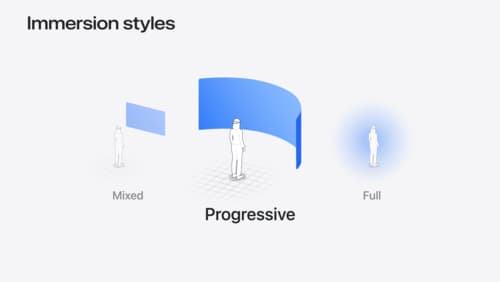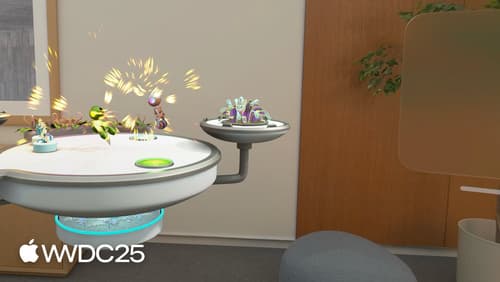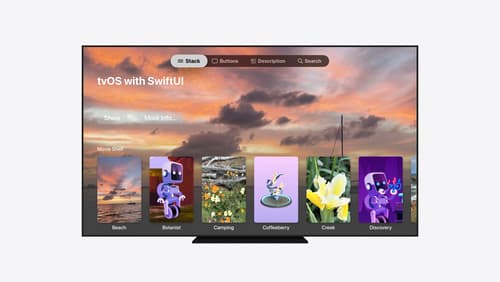swiftui scroll view coordinate space
Asked on 2025-07-14
1 search
In the context of SwiftUI and coordinate spaces, there are several relevant points discussed in the WWDC sessions:
-
Coordinate Spaces in SwiftUI: SwiftUI provides local and global coordinate spaces. The local coordinate space refers to the current view's coordinate space with the origin at the top left of the view, while the global coordinate space refers to the window's coordinate space with the origin at the top left of the window.
-
Immersive Coordinate Space: Introduced in VisionOS 1.1, the immersive coordinate space is a new type of coordinate space that fits alongside SwiftUI's existing local and global coordinate spaces. It has its origin defined as the point on the ground below you, which is particularly useful for spatial and immersive applications. This is discussed in the session Dive deep into volumes and immersive spaces (19:38).
-
Coordinate Conversion: SwiftUI and RealityKit have enhanced capabilities for coordinate conversion, allowing for seamless transitions between different coordinate spaces. This is particularly useful when working with 3D content and immersive experiences. The session Better together: SwiftUI and RealityKit (24:56) covers unified coordinate conversion.
These sessions provide insights into how SwiftUI handles coordinate spaces, especially in the context of immersive and 3D applications. If you are interested in more details about scroll views and coordinate spaces, the session What’s new in SwiftUI (16:18) discusses scrolling enhancements in SwiftUI.

Dive deep into volumes and immersive spaces
Discover powerful new ways to customize volumes and immersive spaces in visionOS. Learn to fine-tune how volumes resize and respond to people moving around them. Make volumes and immersive spaces interact through the power of coordinate conversions. Find out how to make your app react when people adjust immersion with the Digital Crown, and use a surrounding effect to dynamically customize the passthrough tint in your immersive space experience.

Better together: SwiftUI and RealityKit
Discover how to seamlessly blend SwiftUI and RealityKit in visionOS 26. We’ll explore enhancements to Model3D, including animation and ConfigurationCatalog support, and demonstrate smooth transitions to RealityView. You’ll learn how to leverage SwiftUI animations to drive RealityKit component changes, implement interactive manipulation, use new SwiftUI components for richer interactions, and observe RealityKit changes from your SwiftUI code. We’ll also cover how to use unified coordinate conversion for cross-framework coordinate transformations.

Migrate your TVML app to SwiftUI
SwiftUI helps you build great apps on all Apple platforms and is the preferred toolkit for bringing your content into the living room with tvOS 18. Learn how to use SwiftUI to create familiar layouts and controls from TVMLKit, and get tips and best practices.
